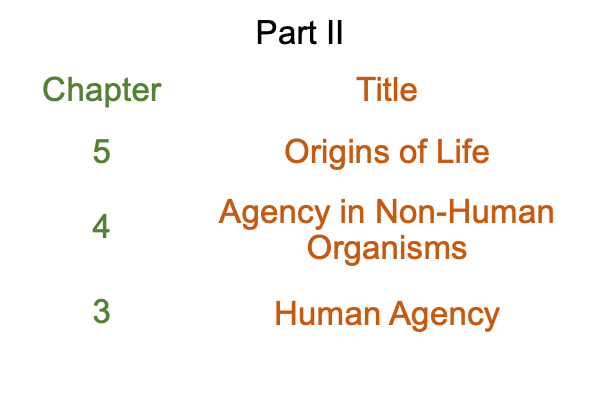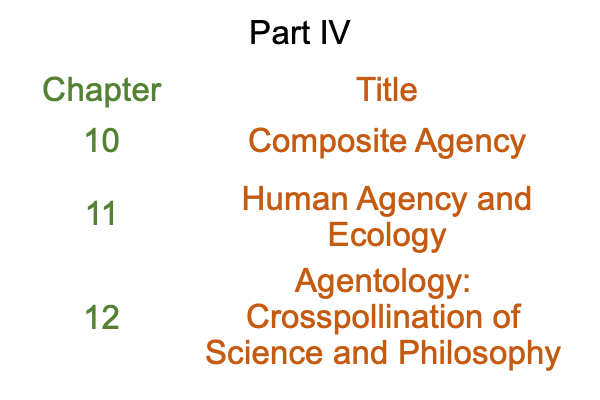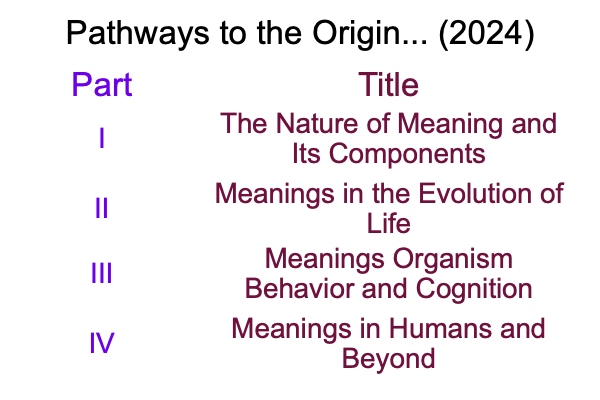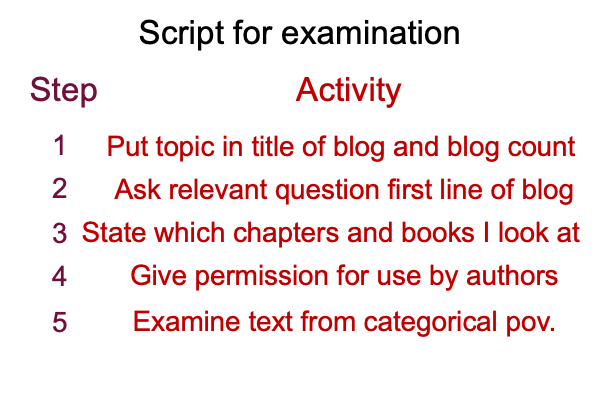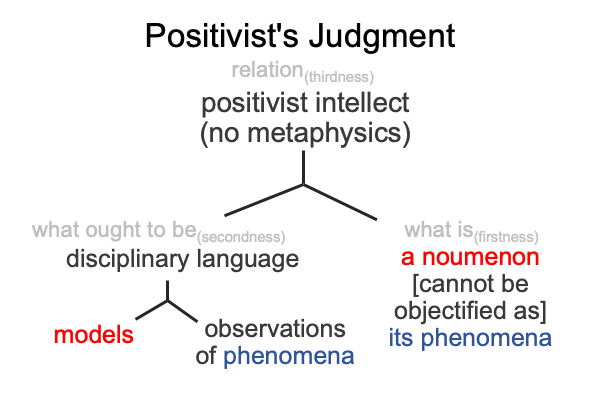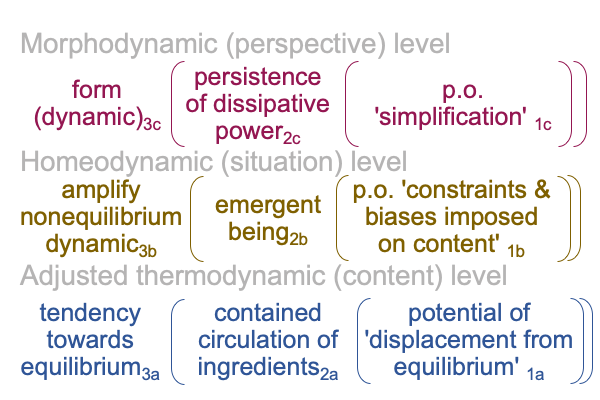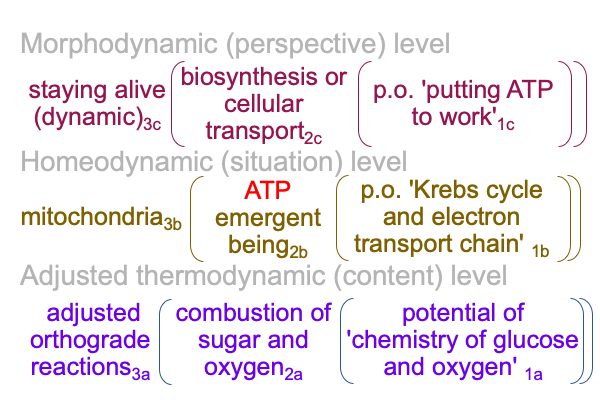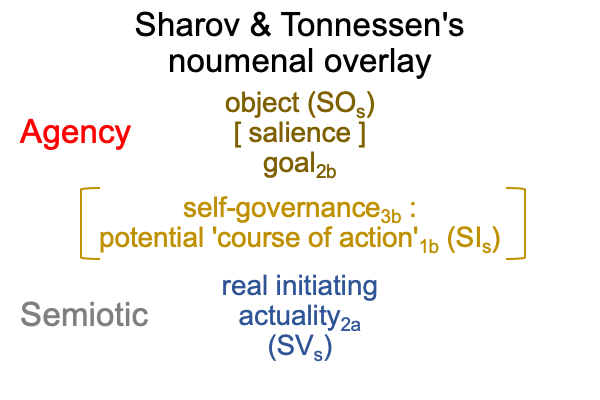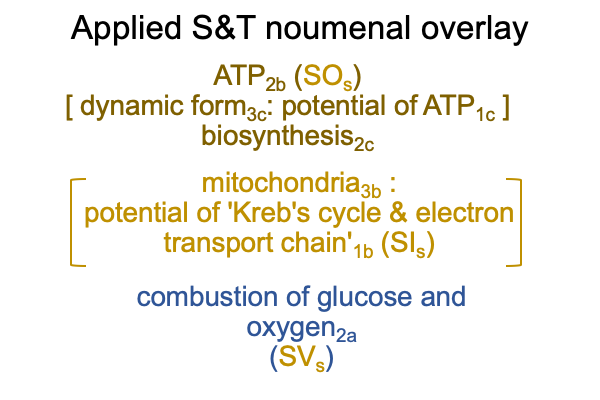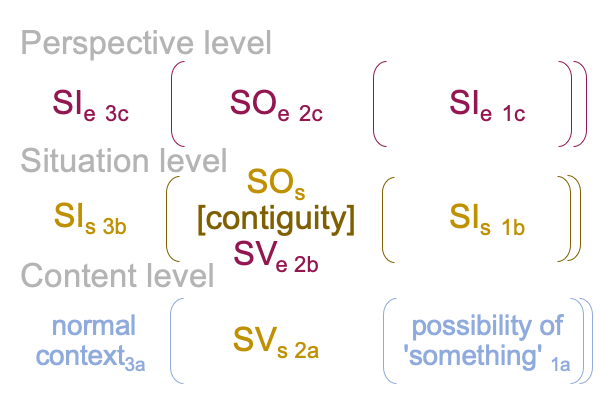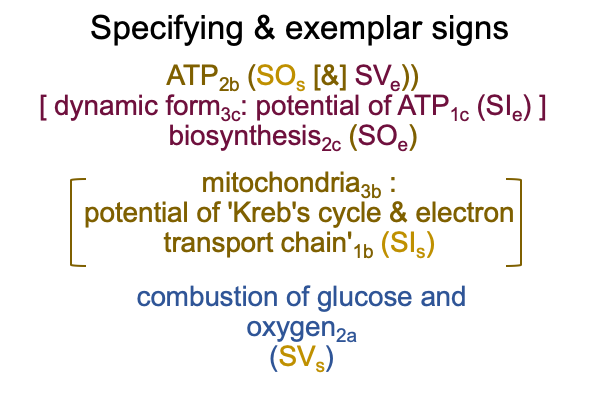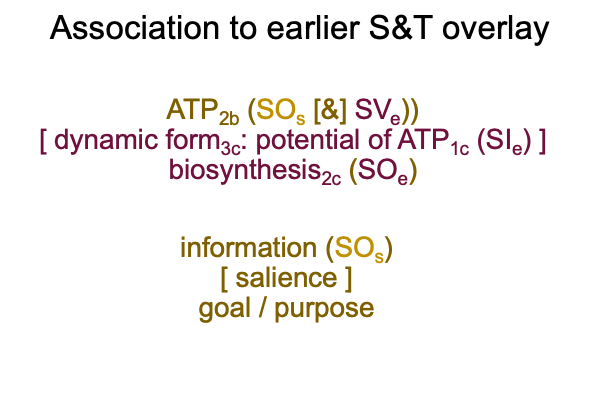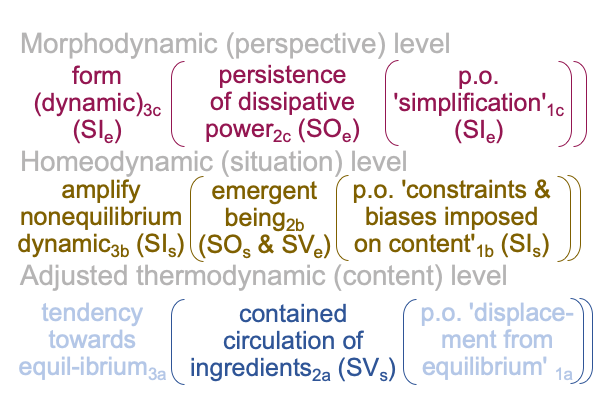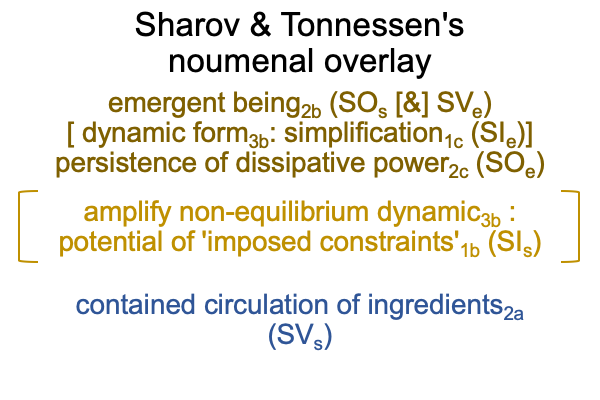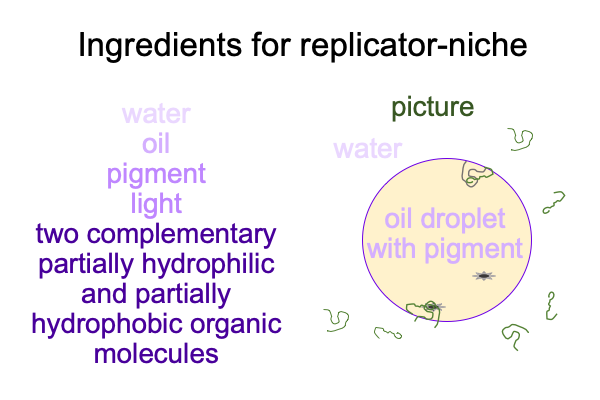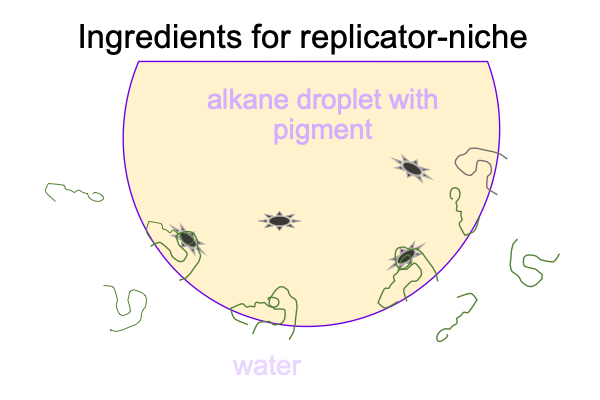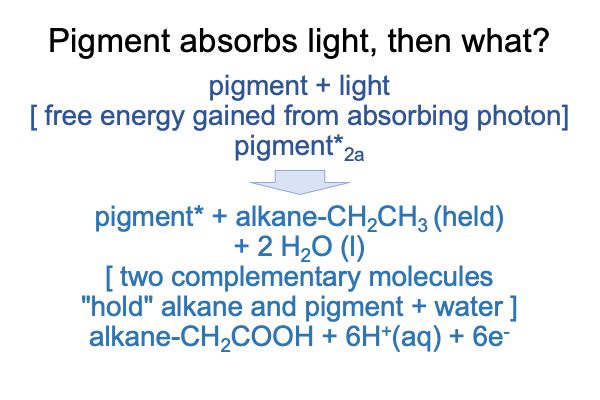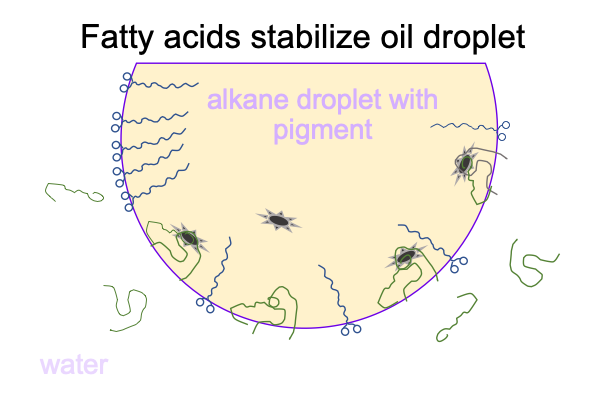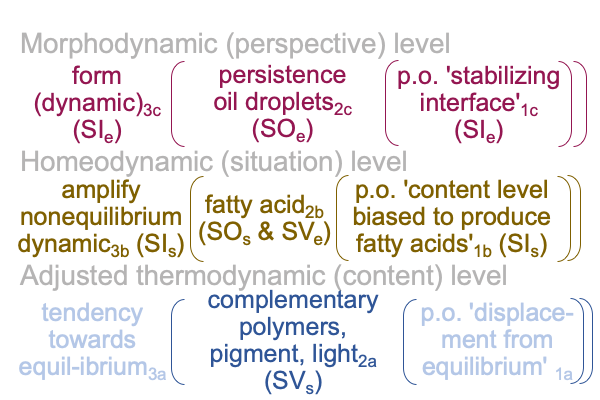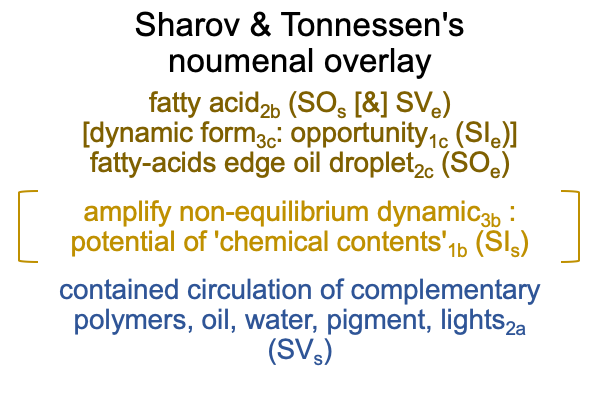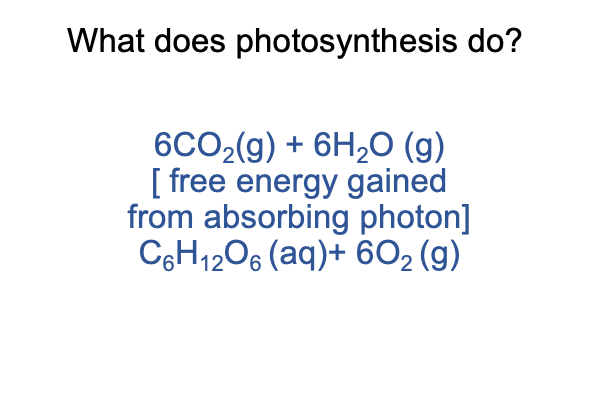Can Biosemiotics Explain The Psychometric Sciences? (Part 4 of 4)
0248 Here is the interscope for the post-truth condition.
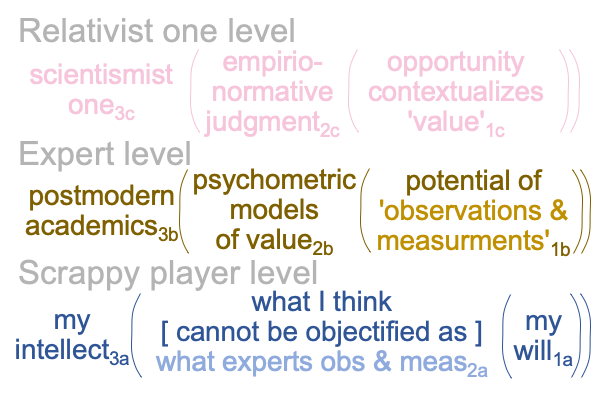
Take a look at the above figure and see whether you can identify what the noumenon must be.
Yes, the noumenon must be what I think2a.
0249 In the following figure, the noumenon is in red.
Its phenomena appear in green.
The resulting models appear in light blue.
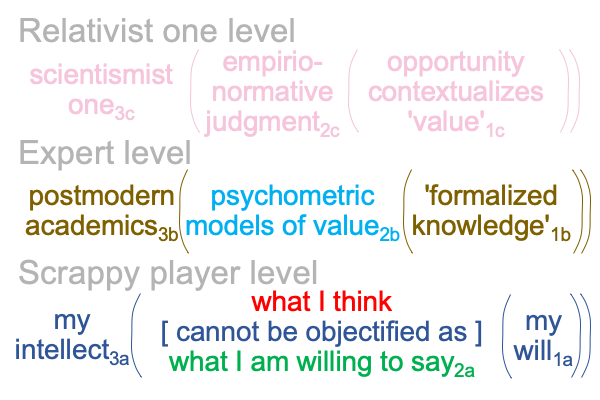
0250 This raises a question, “How does a system, where experts3b situate scrappy players3a, substitute expert-determined values2b for the noumenon2a?”
Sharov and Tonnessen answer in the first sentence of the abstract for chapter two of Semiotic Agency. Signs are semiotic tools.
In this instance, a sign-vehicle residing on the perspective level (SVi) stands for a content-level sign-object (SOi) in regards to a content-level sign-interpretant (SIi).
Specifically, a system-generated empirio-normative judgment2c (SVi) stands for what I think2a (SOi) in regards to my (the scrappy player’s) intellect3a operating on my will1a (SIi).
0251 Here is a picture.
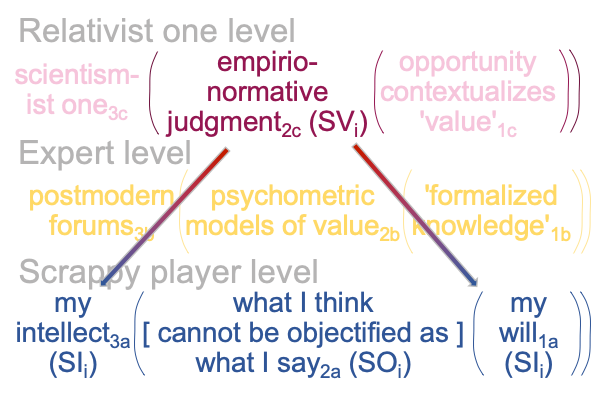
0251 What does this imply?
Well, a system-generated empirio-normative judgment2c (SVi) influences my reason3a,1a (SIi) in such a fashion as to impact my wishes, my habits and my choices2a (SOi).
I may not even realize that the interventional sign-relation is being used by some agent3c on the perspective level,taking the opportunity1c to project2c an expert-fashioned psychometric value2b my way. I encounter the interventional sign-vehicle2c (SVi) without realizing that it is a semiotic tool, aiming to trigger my intellect3a and my will1a (SIi) in such a way as to alter what I think2a (SOi).
0252 How crazy is that?
But, that is not the implication that I am looking for.
The implication is this: What I think2a is a noumenon. The empirio-normative judgement2c aims to influence my intellect3a and will1a in order to alter my wishes, habits and choices2a. So, the dyad, choice [habit] wish, is a model that the perspective-level judgment2c tries to lay over what I think2a.
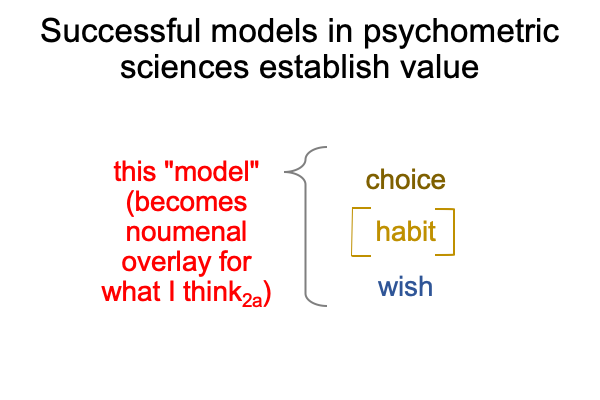
0253 The dyad, choice [habit] wish is a simplification of Sharov and Tonnessen’s noumenal overlay. Its simplicity adds to its plausibility. If I make a habit of treating my wishes as if they are my choices, the the model successfully substitutes for what I think2a.
And, what I say2a serves as phenomena for the psychometric sciences to observe and measure.
0254 Clearly, the psychometric sciences use the interventional sign-relation as a tool.
Biosemiotics says that signs are tools.
0255 One science accounts for the other.
In the process, two features of science come to consciousness.
The psychometric sciences represent the tendency of science to manipulate and control the subject of inquiry.
Reason3a,1a is the normal context of the intellect3a operating on the will1a.
Biosemiotics represents the tendency of science to pursue the truth.
Reason3a,1a is the normal context of the intellect3a seeking the truth1a.

